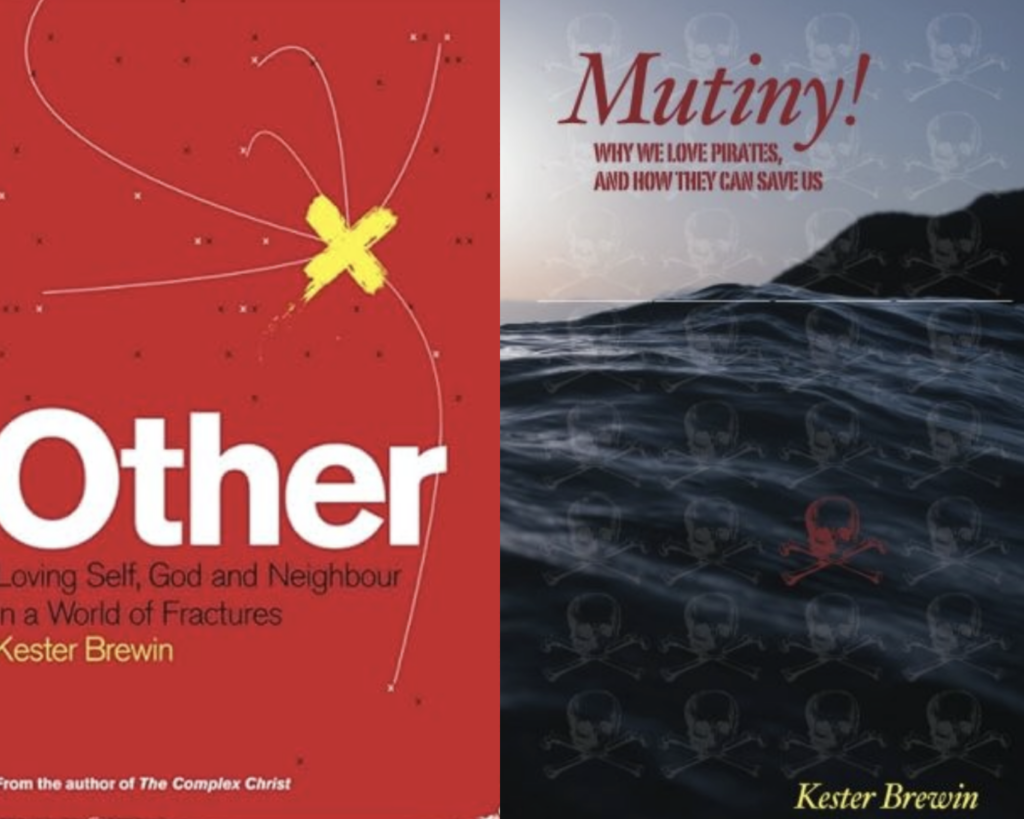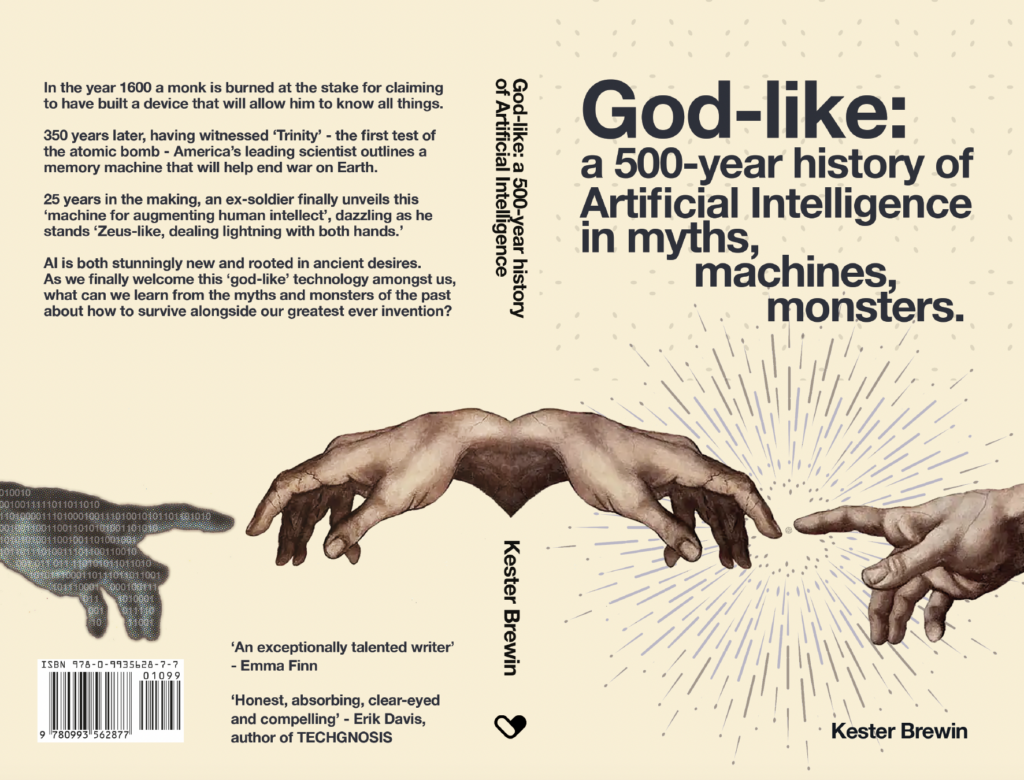
Has social media led to a rise in anti-social behaviour? And, if so, does the widespread adoption of AI risk making this worse? Or is a highly-networked society one that will see community capacity deepened?
Life has a habit of circling around.
The first book I wrote – many, many years ago – was an attempt to read some thinking I’d been exposed to on complexity theory into the theological and socio-cultural questions I’d been wrestling with. I was doing so within the context of a rich community of praxis – a motley gathering of writers, thinkers, dancers, designers, musicians, actors and ecclesiastical misfits who were looking to do something more interesting than ditch baby and bathwater.
It was my dear friend Jonathan Rabagliati – a fine artist, a very fine artist, now turned geometry and computational designer – who first introduced me to Steven Johnson’s book, Emergence, the Connected Lives of Ant, Brains, Cities and Software. That led me down a rabbit hole to the work of the Santa Fe Institute – the world-leading centre for the study of complexity theory and its applications.

As I’ve explained in the later e-book edition, my own theological positions have moved a very long way since then… and that is partly because of my continued interest in complexity. In a roundabout way, it has informed each of my books since.
At its simplest level, a complex system is one that emphasises horizontal connections. It achieves a level of self-organisation by avoiding vertical hierarchies that establish norms from some high-level ‘boss’ that are then enforced downwards from the monarch / diety through a system of ministers / priests who work to ensure an obedient group of subjects.
My second book, Other, challenged this vertical ‘Big Other’ as means of creating communities of inclusion and embrace, and offered thoughts on how an emphasis on the horizontal other (hijacking Lacan’s language, l’object petit-a, the little other) was preferable as it better avoided a requirement of violent enforcement.

Mutiny!, my book on pirates as agents of social change, built on a small section in Other about this. Pirate communities – and the Temporary Autonomous Zones that they generated – were classic self-organising systems with minimal hierarchy. As I explore in the book, there is a direct line between their actions to break open the hierarchical, powerful norms of religious monarchy and enforced obedience to god, king and country and the revolutions that swept aside corrupt monarchies in the 18th centuries and onwards.
Clearly pirates were not known for venerating the social contract, as it would have been understood by those in authority in England at the time. But the point of the book was to show that this social contract had entirely broken for these people anyway. They were ‘villains of all nations’, utterly downtrodden and discarded – and their response was to build one on entirely different principles, one that looked not to a god above to establish its authority, but to a justice, equality and care that was based on their equal standing as ‘the already dead’ in the eyes of the state.
In an oblique way, Getting High treads the same ground. Outlining the long and recurring history of the human desire for the vertical, it argues that a richer, more empathetic and just human flourishing is found in accepting our place with two feet on the ground…. not flying off in space ships or tripping into the chemical heavens. If you read the new book God-like, you’ll see how the seeds for it were sown here.
So that brings me to the work on AI, and an incredibly kind invitation from someone who has encouraged me in my work over the past few years to spend some time in Oxford with people from the Santa Fe Institute towards the end of this week.
And, in preparation for that, that has led to me spending some time thinking about how this circle of ideas is – not closing – but coming into some helical form, back to where it all started in the disrupting seed of an idea about complexity and community.

The promise of the internet, then the Web, then social media can be framed as one of establishing a vast network of horizontals. The digital age is complexity. It is networks. Not needing mediation by some higher authority, I can connect with people from all over and establish relationships with them.
As I outline in the book, this is the founding ethic: in an atomic age of the Cold War, an Iron Curtain and the threat of divine-level violence, a modem is a means of building empathy, understanding and peace.
Yet this decentralised, networked model has become… somewhat corrupted. Rather than a golden age of horizontals, what has emerged are some greater-than-ever verticals: Google, Facebook, Twitter… and with AI, what we see is the potential emergence of totally a new kind of vertical: the Divine Algorithm.
Of course, the sell to us from the big social media companies remains the horizontal, the human-to-human connection. But this has not led to a blossoming of self-organisation and a stronger sense of communitas. Indeed, there’s this nagging sense that perhaps social media has eroded our geographic, physical communities and is perhaps leaving the social contract more fragile than ever.
Why might this be?
My hunch is that the kind of horizontal we have seen established is too weak, and too simplex. On Instagram, we are connected – but not known. We have thousands of tendrils, but fewer strong bonds.
A self-organising system relies on the complexity, on the richness of the horizontal interactions between agents that then builds an emergent structure that has a shared intelligence and resilience because each agent is connected in non-trivial ways.
This is the point about the meso-level communities that I make via discussion of Robert Putnam’s book Bowling Alone. In such a community, the point isn’t just that one goes bowling – this would be simplex. It is that via this simple mesh of an activity, complex interactions are built between a group of people who experience their otherness, their inclusion and embrace with those who are not exactly ‘like them’. This is where empathy is built.
In the past, this would have been the street-village-parish level – a series of larger circles of connection – but one that maxed out at a number that effectively meant that degrees of separation were small. This is not to valourise this as a perfect nostalgic community idyll. Through the strong verticals of church and state there was prejudice, classism, chronic inequality and abuse of power. But at this village, ‘local chapter’ scale of Dunbar’s number – around 150 people, as I blogged about here, we are able to sustain a sense of knowing, and being known in ‘strong’ ways.
It’s my hunch that this is the fabric of the social contract. Anti-social behaviour is not a failure of the law, or a failure of policing. It’s more about a sense of being anonymous, of not having connections of care that work to moderate our impulses.
How many people would shoplift when they knew – and were known – by those running the shop? I’ve seen people explode in road rage… and then realise that the person who’d apparently violated them to some unforgivable degree was actually a friend. Suddenly it’s all smiles.
Our behaviour offline is beginning to mirror our behaviour online: we are virtually anonymous in our physical environments, and thus care less for those we share that space with.
My concern is that AI systems will amplify this problem because more and more of our experience will be attending to weak digital connections – the algorithm will find ways to make this time spent on screen feeding it more data seem more and more important – rather than investing in local, physical, strong ones. And yet the promise that big tech AI will hold out is precisely that it is ‘democratising’ our experience by giving us direct access to information and other people, without the mediating presence of a priest or politician or boss.
There is plenty to celebrate here. If you’ve read the book, you’ll see me say over and over that AI is not some evil force. It has enormous power to do good, and digital tools have brought incredible benefits. So tech is not ‘bad’; but nor is it neutral. It is divergent, meaning that we have to be incredibly careful to understand the negative impacts that are accruing while we enjoy the positive ones.
What it is not doing is generating human complexity; the kind of complexity we see is limited. Indeed, in the weakening of physical ties – even as it promises to be offering more connections to more people than ever before – an algorithmically dominated experience risks eroding the social contract and leading to greater civic stress.
But a contract has more than one party. In its original sense, it was not between individuals, but between individuals and the state. Citizens surrendered certain freedoms in return for the state operating the machinery of the rule of law.
The secondary problem of the increasing digitalisation of our lived experience is that the reaction to rises in anti-social behaviour is a rise in digital surveillance.
The problem here is that the experience of being ‘known’ is reduced to being ‘identified’ and ‘tagged’. This has nothing to do with strong horizontal bonds of community, and though it might offer a form of deterrent it cannot positively construct a better society. The cost of poor behaviour is more likely to be exacted, but there’s no good mechanism of relational weight gained.
That’s not to say that there isn’t hope. Far from it. Having seen the problems co-occurring with the rise of social media, governments are beginning to wake up and understand that their side of the bargain – to protect citizens – needs some work. And with good policies that have a cross-cutting focus on strengthening the in-person, meso, human-scale communities of care… ones that exploit the benefits of the power of digital tools… then there is hope that a future can be built that is more empathetic, more kind, more generous… better.
You can get a copy of God-like here, or limited edition signed copies from my local bookshop here.
